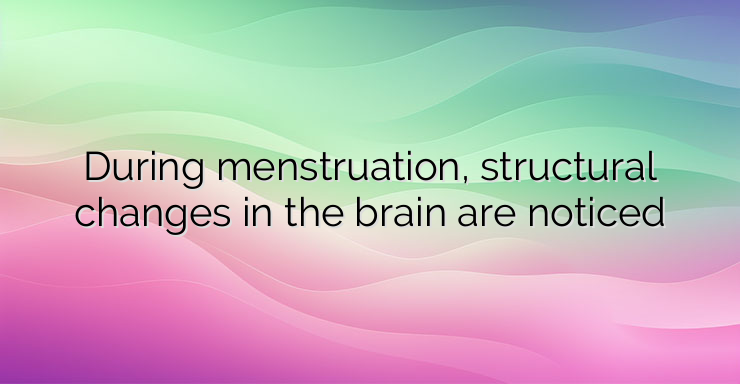The constant ebb and flow of hormones that guide the menstrual cycle doesn’t just affect women’s reproductive function and moods. They also affect the structure of the brain, and a new study gives us insight into how this happens. Led by neuroscientists Elizabeth Reesor and Victoria Babenko of the University of California, Santa Barbara, a team of researchers followed 30 menstruating women, documenting in detail the structural changes that occur in the brain when hormone levels fluctuate. The results suggest simultaneous changes throughout the brain and in human white matter microstructure and cortical thickness coinciding with hormonal rhythms governed by the menstrual cycle. The powerful brain-hormone interaction effects may not be limited to the classically known receptor regions of the hypothalamic-pituitary-gonadal axis (HPG-axis). Menstruating women experience about 450 periods in their lifetime, so it would be nice to know the different effects they can have on the body. Although this is something that happens to half of the world’s population in half of their lives, research is lacking. Most of the research on hormonal effects on the brain has focused on brain activity rather than the structure itself. Cyclic fluctuations in the hormones of the hypothalamic-pituitary-gonadal axis exert powerful behavioral, structural, and functional effects through effects on the mammalian central nervous system. Yet very little is known about how these fluctuations alter the structural nodes and information pathways of the human brain. The microstructure of white matter—the fatty network of nerve fibers that carry information between gray matter areas—has been found to change with hormonal changes, including puberty, oral contraceptive use, hormone therapy, and estrogen therapy after menopause. The researchers performed magnetic resonance imaging (MRI) on the participants during three menstrual phases: menses, ovulation and mid-luteal phase. During each of these scans, they also measured the participants’ hormone levels. The results show that as hormones fluctuate, the volumes of gray and white matter also change, as does the volume of cerebrospinal fluid. In particular, just before ovulation, when levels of the hormones 17β-estradiol and luteinizing hormone rise, the participants’ brains showed changes in white matter, suggesting faster information transfer. Follicle-stimulating hormone, which rises before ovulation and helps stimulate ovarian follicles, binds to a thicker layer of gray matter. Progesterone, which rises after ovulation, is associated with increased tissue and decreased cerebrospinal fluid volume. The study lays the groundwork for future research and perhaps for understanding the causes of unusual,but serious mental problems related to menstruation. The study of the brain-hormone connection is necessary to understand the daily functioning of the human nervous system, during periods of hormonal change, as well as throughout the human lifespan. References: https://www.biorxiv.org/content/10.1101/2023.10.09.561616v1 https://www.sciencealert.com/for-the-first-time-scientists-show-structural-brain-wide-changes- during-menstruation


Leave a Reply